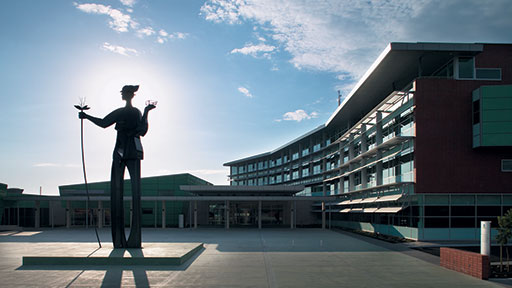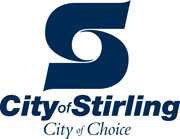The Victorian Asbestos Eradication Agency
“AIRSystem is the first of its type, and it contributes to ending the lethal legacy of asbestos. It’s minimising asbestos-related diseases, it’s educating the public, and it’s reducing health risks. To be involved in the development is obviously very rewarding.”

The Victorian Asbestos Eradication Agency unleashes the power of data with an online reporting system on the cloud
For the Victorian Asbestos Eradication Agency (VAEA), modernisation goes beyond IT to apply to every interpretation of the word “infrastructure.”
The VAEA was established to help Victoria work towards the eradication of identified asbestos containing materials from Victorian government owned buildings. The removal of these materials will help prevent future asbestos exposures, reduce the risk of asbestos related diseases, and make Victorian workplaces and communities safer. The team does this by:
- Working with departments and agencies to maintain and update data regarding the asbestos legacy within government owned buildings (eg offices, hospitals, train stations, community centres, prisons and TAFEs)
- Providing advice to government regarding the prioritised removal of the identified asbestos materials
- Making the asbestos legacy information available to departments and agencies so they can better manage their asbestos legacy until the materials are removed
“Exposure to asbestos materials continues to kill over 1,000 Victorians every year, our work is driven by a desire to make the built environment safer for workers and the communities. To achieve this we need to understand where the asbestos is located and have a plan for its prioritised removal” said Pinar Gulay, AIRSystem Adoption Manager, VAEA.
In other words, it’s work that requires the ability for knowledge to be presented and analysed in an aggregated and granular level, which is what brought the team to the cloud.
This might seem like a niche use case at a first glance, but…
…think about all the resources government has to maximise utility or recycle. Whether its because teams are working with limited budgets, trying to prevent avoidable impact on the environment, or doing everything they can to make the most of taxpayer funds, governments have to, for example, find a way to drive a fleet of cars through to the last kilometer, use gear or equipment until it cannot reliably perform, and repurpose buildings and infrastructure – provided that the infrastructure can still offer a safe work environment.
And while it is relatively easy to track distance on a car, it is harder to track something that cannot be seen, and harder still if the information that is needed isn't readily accessible. As any real estate team, workplace services lead, property management group, or even private homeowner might tell you, a file here or a set of plans there might note if asbestos is believed to be present. But it’s rarely a guaranteed, comprehensive effort where data has been captured in a standardised (let alone digital) manner. If someone has to impact a wall for some reason – say, updating an office space or fixing something that broke – and finds asbestos unexpectedly, the potential expsoure risk, sudden increase in time and budget can change the most solid of plans.
“A tradesperson coming to install a bracket for a TV in a conference room, needs to know instantly whether there is asbestos in the wall they have to drill into, and the duty holder of the building needs a way to inform the tradesperson of not whether there is any asbestos in the conference room. AIRSystem allows this information to be retained and displayed instantly rather than relying on the person having to read through large PDF files or excel spreadsheets,” said Gulay.
Infrastructure on infrastructure: VAEA launches a building reporting system on the cloud.
Pinar Gulay and team launched AIRSystem: a consolidated asbestos reporting system on the Salesforce Customer 360 Platform for Government. This gives the VAEA and its stakeholders – those managing and occupying government offices, hospitals, train stations, and so on – a comprehensive, centralised database on the presence of asbestos, which they can then use to inform removal of asbestos from their buildings and until it is removed decisions regarding in situ management, inspection and maintenance.
Here’s how it works:
Front-end experience
Government departments and agencies who have been granted access to AIRSystem are welcomed via an online community portal, giving users personalised information about asbestos-containing materials within their workplace buildings. The user can access the portal at any time and access information about the presence and condition of asbestos within their buildings.
Case management
Service Cloud provides the VAEA with case management functionality that gives the AIRSystem Adoption Support Team full visibility into customer requests. Government agencies or users outside the VAEA can submit requests for service or additional information regarding how the system works. Once a request has been submitted, a case is created and sent to the AIRSystem Adoption Support Team automatically, streamlining the process. The VAEA on the backend works to address and resolve cases, ensuring they are keeping the user informed in real-time.
Virtual training and enablement
myTrailhead was added, which the team uses to provide online AIRSystem training as well as inform department and agency users about AIRSystem enhancements.
Data-driven reports and dashboards
Einstein Analytics allows the VAEA to analyse and interrogate the data and provide departments and agencies with interactive dashboards. This allows each user to better understand their asbestos legacy and make informed decisions regarding the prioritised removal of the identified asbestos materials.Additionally, dashboards offer clickable, web-style interfaces which allow end users to click in and drill down to see a certain level of detail or roll up to summary views, filter data to reflect an ACMs risk assessment, and more. AIRMaps is a geospatial tool that provides an additional layer to plot the location of buildings containing asbestos. AIRSystem is also able to integrate 3D renderings and images that allow the user to move virtually through the building, see the location and details of an ACM and access full details within the system. Users can also scan a QR code to access the system and pinpoint exactly where the ACM is located.
- Platform-level services
The team conducts tests in a Sandbox environment, giving them a way to improve new features and functionalities without disrupting VAEA’s active tools and operations.
3 Best Practices from VAEA
This approach will help ensure that the long term plan for the prioritised removal of asbestos from Victorian government buildings is informed by accurate information, measured, systematic and safe.
Learn more about the best practices that help enable the team to deliver this kind of impact.
Results and impacts
AIRSystem brings data out of filing cabinets and folders and has transformed the way the VAEA informs and coordinates removal of asbestos. The VAEA is rolling out access to AIRSystem across the Victorian public sector giving 54 agencies already, a live, secure, comprehensive database.
“AIRSystem is the first of its type, and it contributes to ending the lethal legacy of asbestos. It’s minimising asbestos-related diseases, it’s educating the public, and it’s reducing health risks,” said Gulay. “To be involved in the development is obviously very rewarding.”
Keep exploring stories like this one.
Questions? We’ll put you on the right path.
Ask about Salesforce products, pricing, implementation, or anything else — our highly trained reps are standing by, ready to help.












